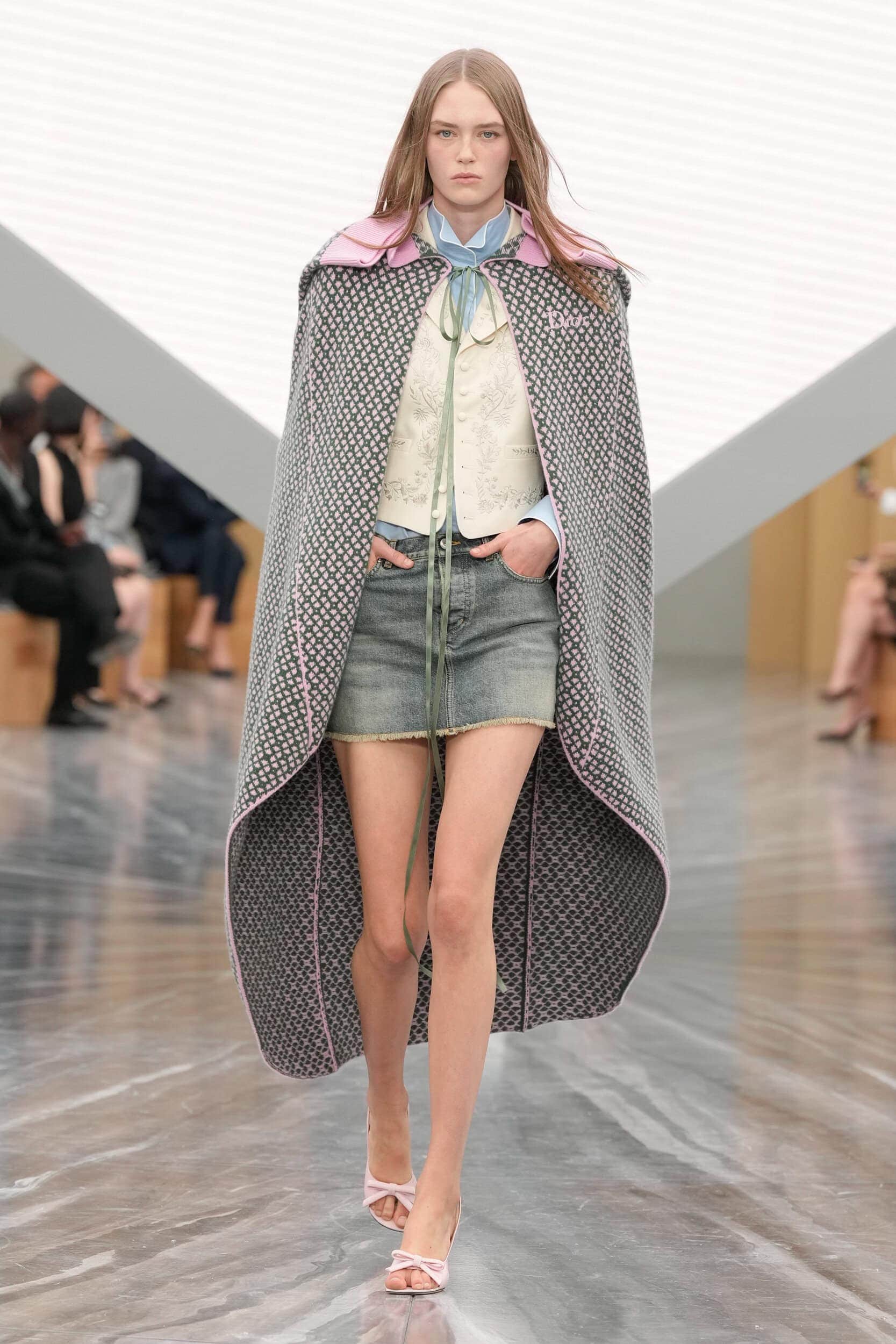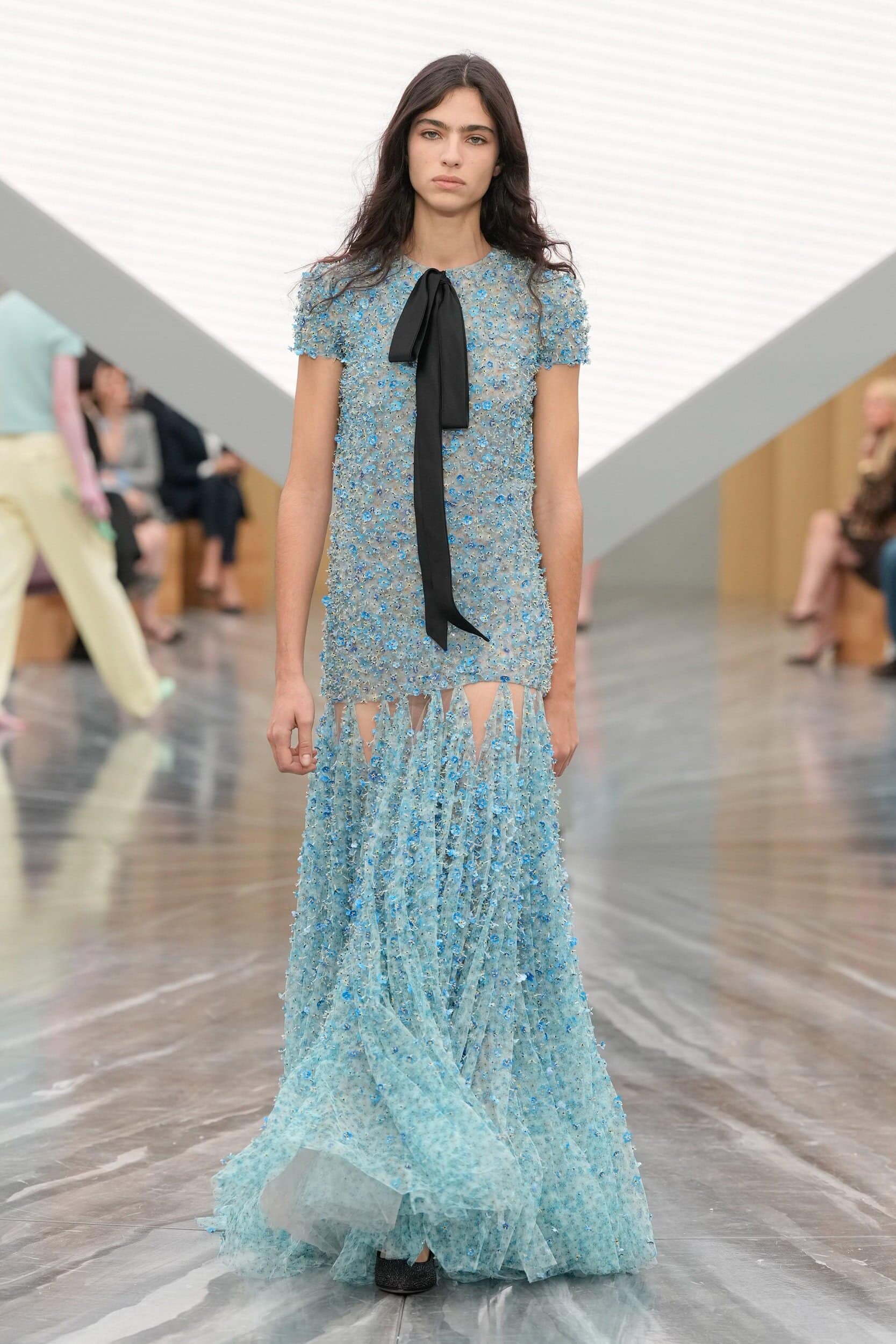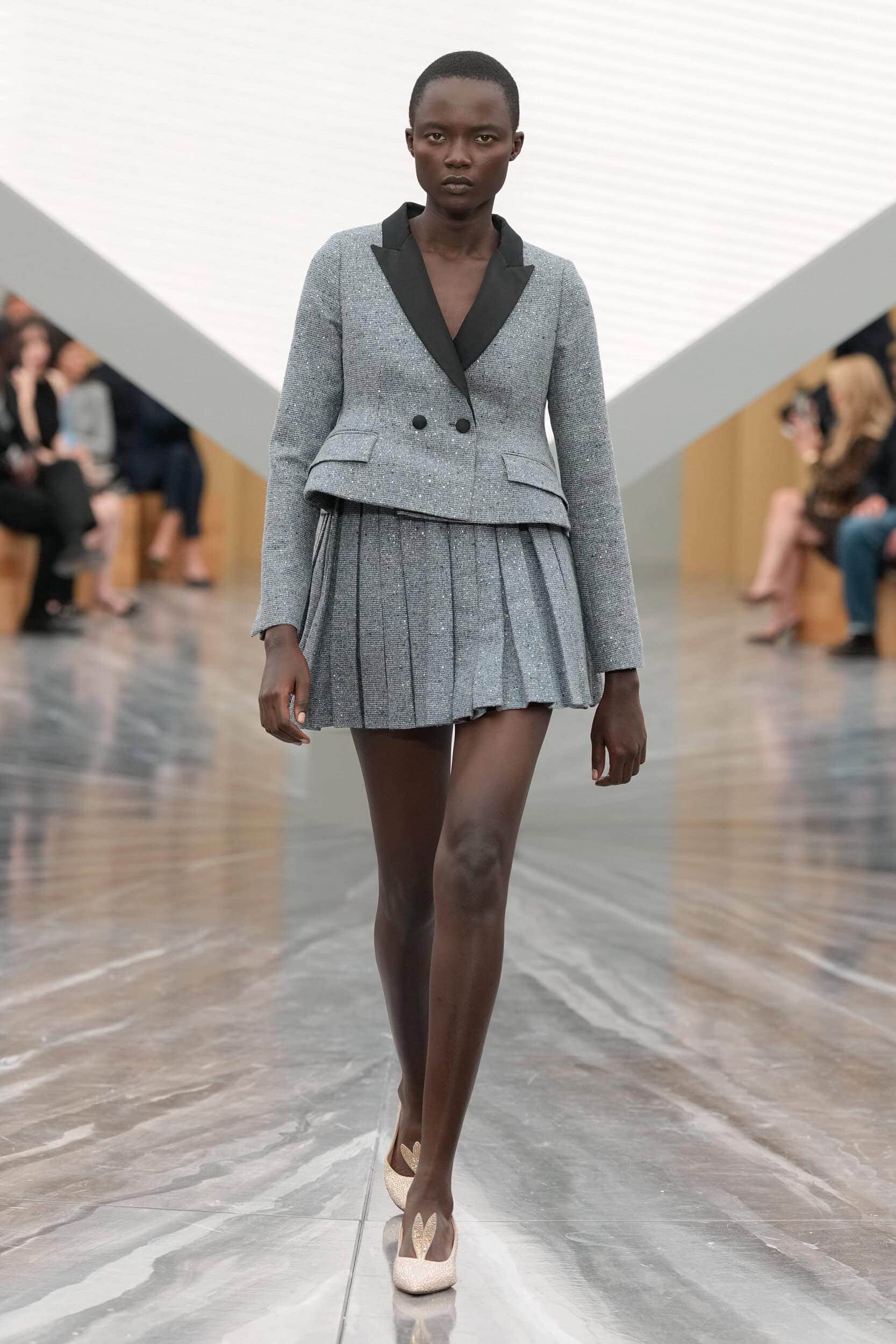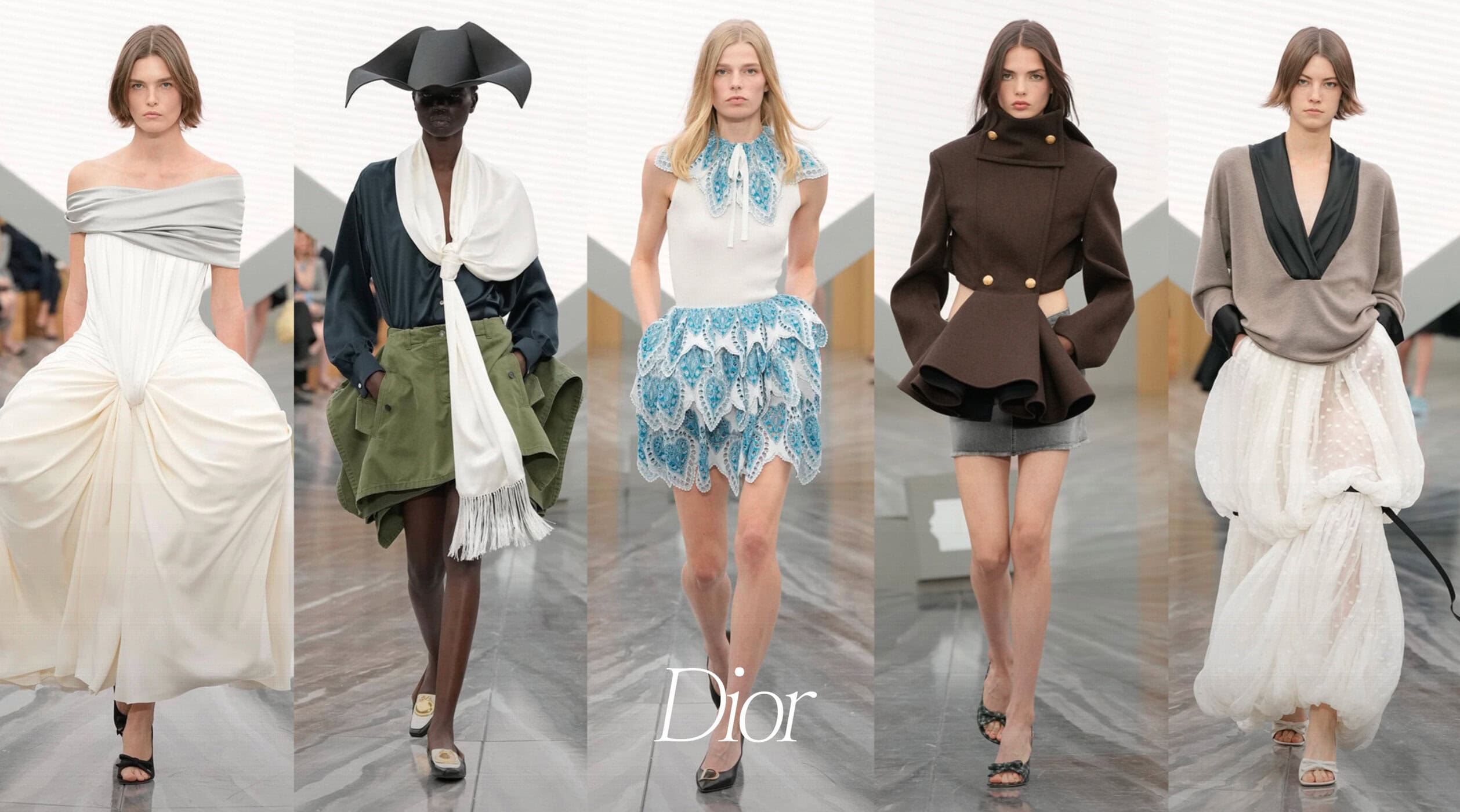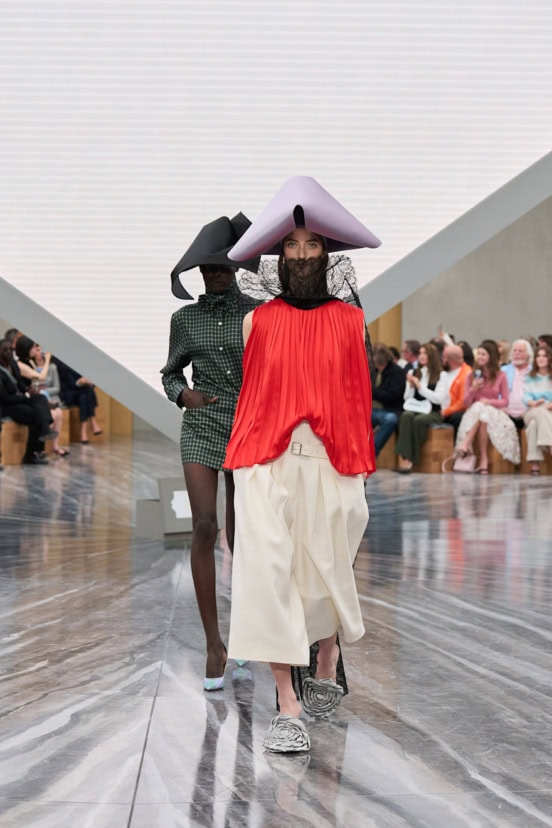When Heritage Misbehaves
Review of Christian Dior Spring 2026 Fashion Show
By Mackenzie Richard Zuckerman
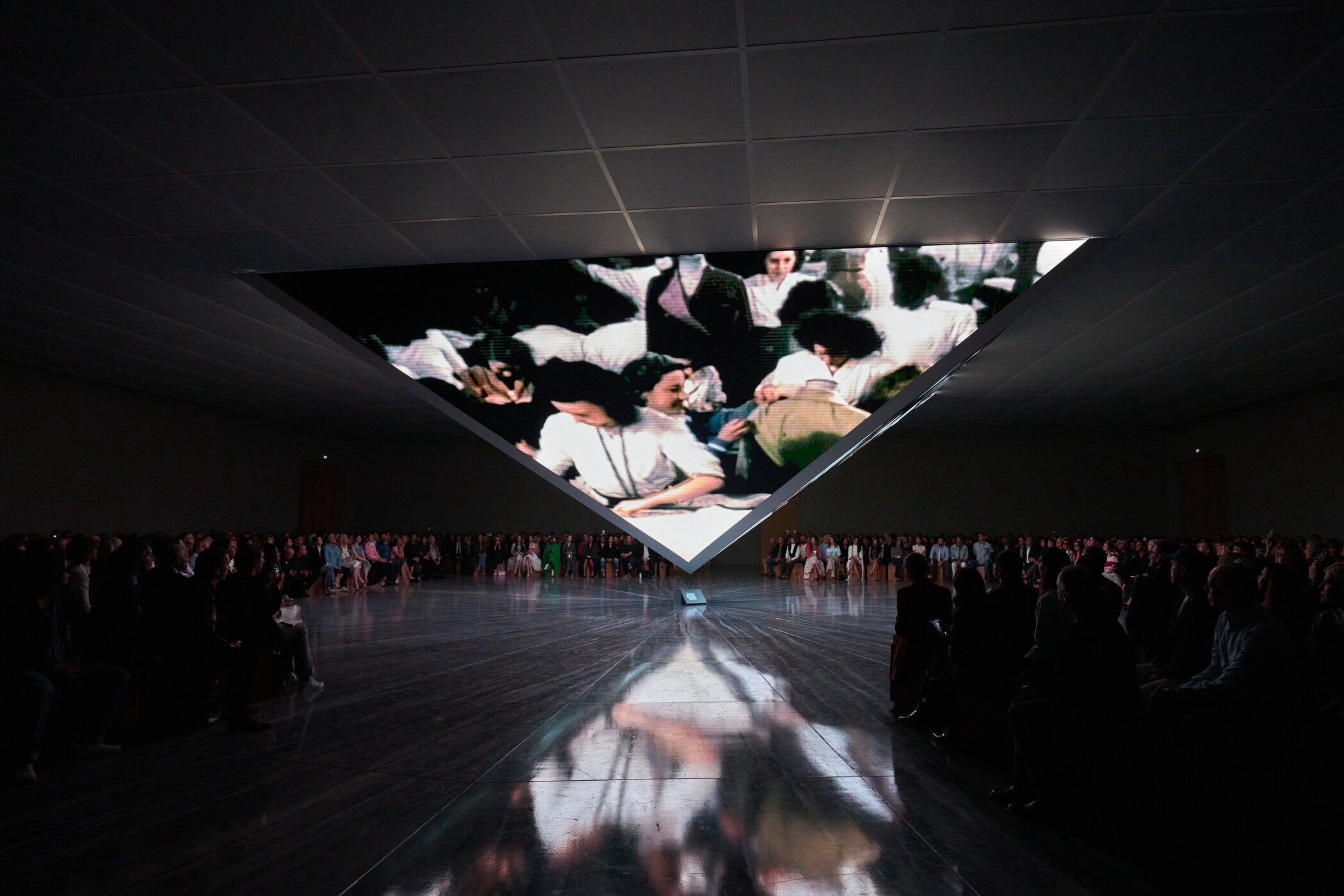
Jonathan Anderson’s debut for Dior began with an act of acknowledgment. Before a single look appeared, the audience was greeted by a montage of the maison’s past creative directors—a lineage stretching from Monsieur Dior himself through Galliano, Simons, Chiuri, and beyond. It was a rare moment of humility in fashion’s forward-charged tempo, a reminder that Dior’s identity is built not on erasure but on elasticity. Each director has answered the question of what the “New Look” should mean for their time: Dior’s postwar exuberance, Galliano’s theatricality, Simons’ intellect, Chiuri’s feminist clarity. By situating himself in that continuum, Anderson signaled that his contribution would be one more chapter in a story defined by reinvention as much as tradition.
What followed was a collection rooted in that duality—at once deeply contemporary and deeply archival. Dior has always dressed the modern woman while offering, often subtly, a commentary on her world. Just as Christian Dior’s defiant use of fabric once pushed back against postwar scarcity, Anderson seemed to be searching for his own societal touchpoint. At Loewe, he famously described our era as a web of “sub-currents” shaped by online communities; here, the message felt polished, elusive, and still in formation. The question lingers: what form should Dior’s social commentary take today, and how boldly should it surface on the runway?
THE COLLECTION
THE VIBE
Elastic Legacy & Heritage as Provocation
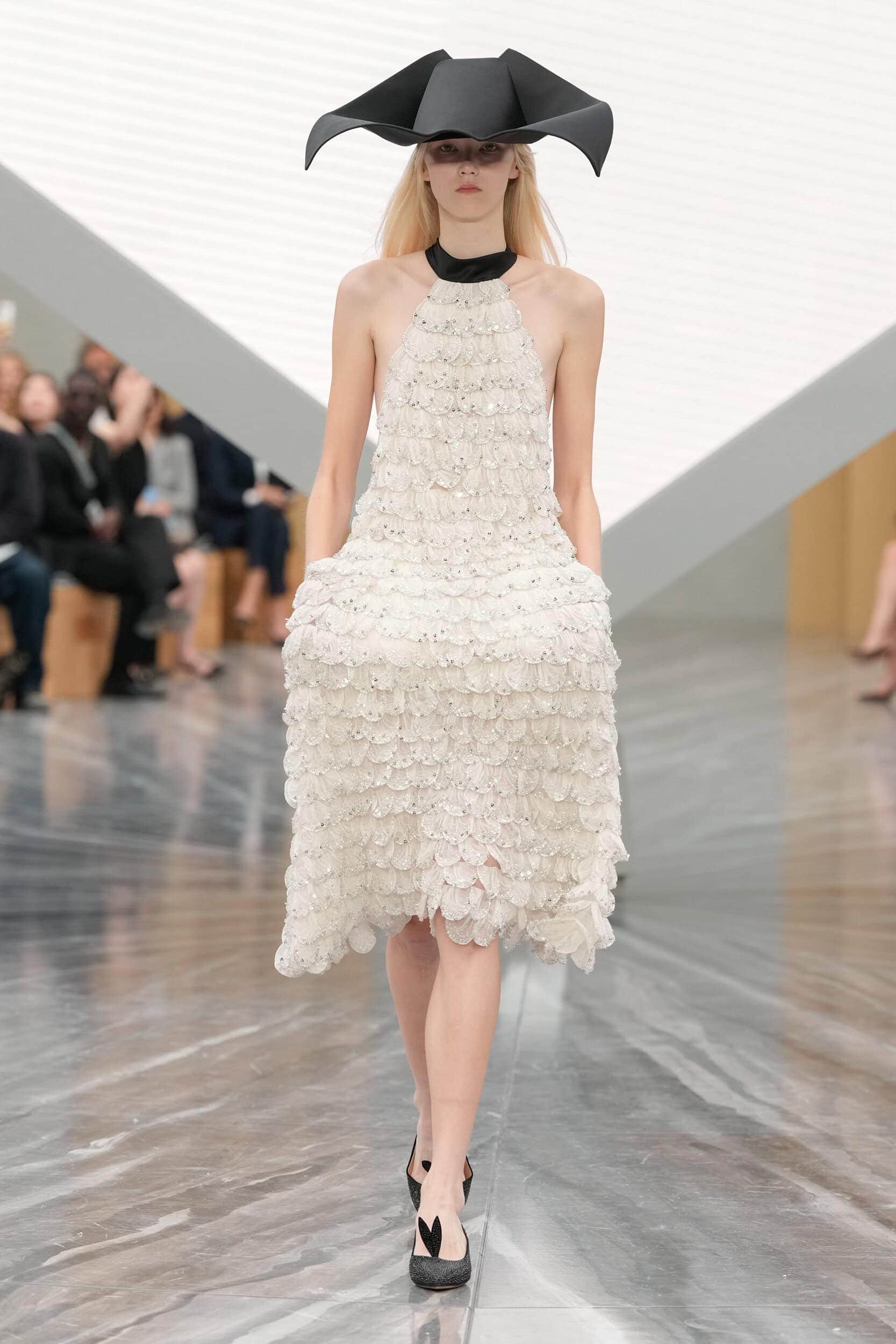
What Anderson seems most intent on doing is prying open Dior’s codes to reveal their elasticity.
Rather than treating the Bar jacket as a sacrosanct relic, he flips its logic: cinched waists become cut-outs, peplums swell into sculptural flares, proportions are pulled down or stretched out until the original reference is both unmistakable and estranged. Where Dior once prescribed silhouette as a kind of feminine ideal, Anderson recasts those structures as malleable—suggesting that form itself can be a site of play, critique, even humor. This is not iconoclasm but a reminder that heritage only remains vital when it is tested, warped, and allowed to misbehave.
Across the collection, those interventions crystallize into themes: reversal, distortion, exaggeration. Tailoring is undone into denim and knitwear, the tuxedo bib becomes a trompe-l’œil sweater panel, lace veils and origami hats stage Dior’s flirtation with spectacle while undermining its solemnity. Common threads emerge in Anderson’s insistence on duality—between rigor and absurdity, reverence and irreverence, daily wear and high ceremony.
By exposing Dior’s codes to inversion and contradiction, he positions himself not as a custodian but as a provocateur within the lineage, curating friction as proof that the house’s language is still alive and still capable of surprise.
Equally striking was the oscillation between the casual and the artisanal. Denim, polos, and track pants collided with hand-worked lace and sculptural millinery, a juxtaposition that made the everyday feel charged and the extraordinary slightly tongue-in-cheek. This balance gave the collection both accessibility and hauteur—reminding us that Dior inhabits both the pragmatic and the poetic in one gesture. Yet it also sharpened the sense of multiplicity at play: Anderson seems intent on testing every register, from the pragmatic to the rarefied, before settling on which voice will define his Dior. But as Dior has long prided itself on agelessness, a question lingers: will these experiments resonate as strongly with the house’s established clientele as with the new generation Anderson seems eager to court?
On another note – in excavating Dior’s archive, Anderson is also quietly reframing what “house codes” even mean in 2025. Where previous directors often approached them as stylistic blueprints to be modernized or softened, Anderson treats them almost like philosophical prompts: What does it mean to revisit an icon until it collapses under its own weight? What happens when a gesture meant to ennoble femininity is stripped down, inverted, or placed in conversation with banality—track pants, polos, denim? As noted earlier, heritage survives only when it is unsettled, but here the emphasis shifts: Dior is imagined not as a museum of ideals but as a laboratory of questions, one where legacy functions less as an answer than as a provocation.
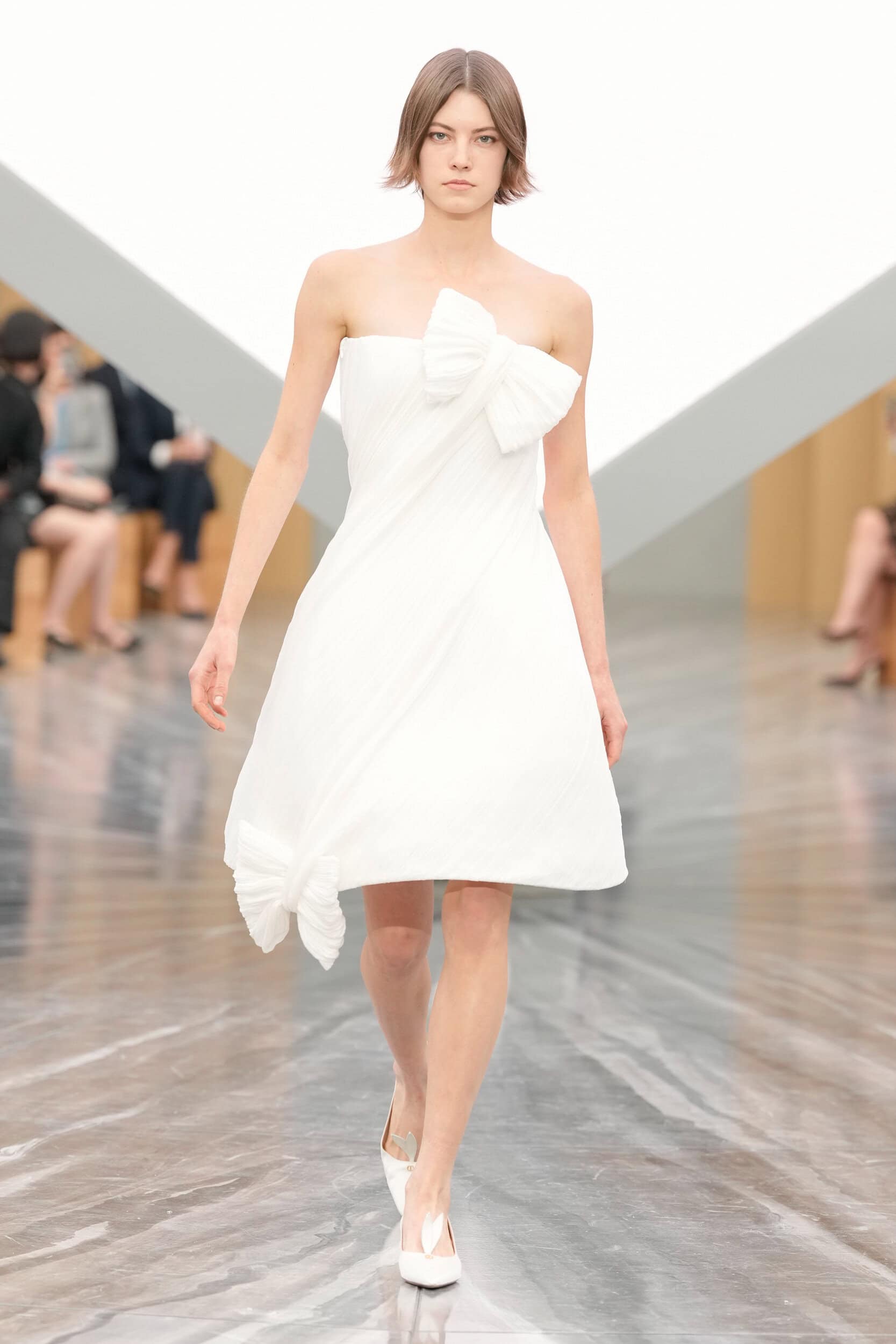
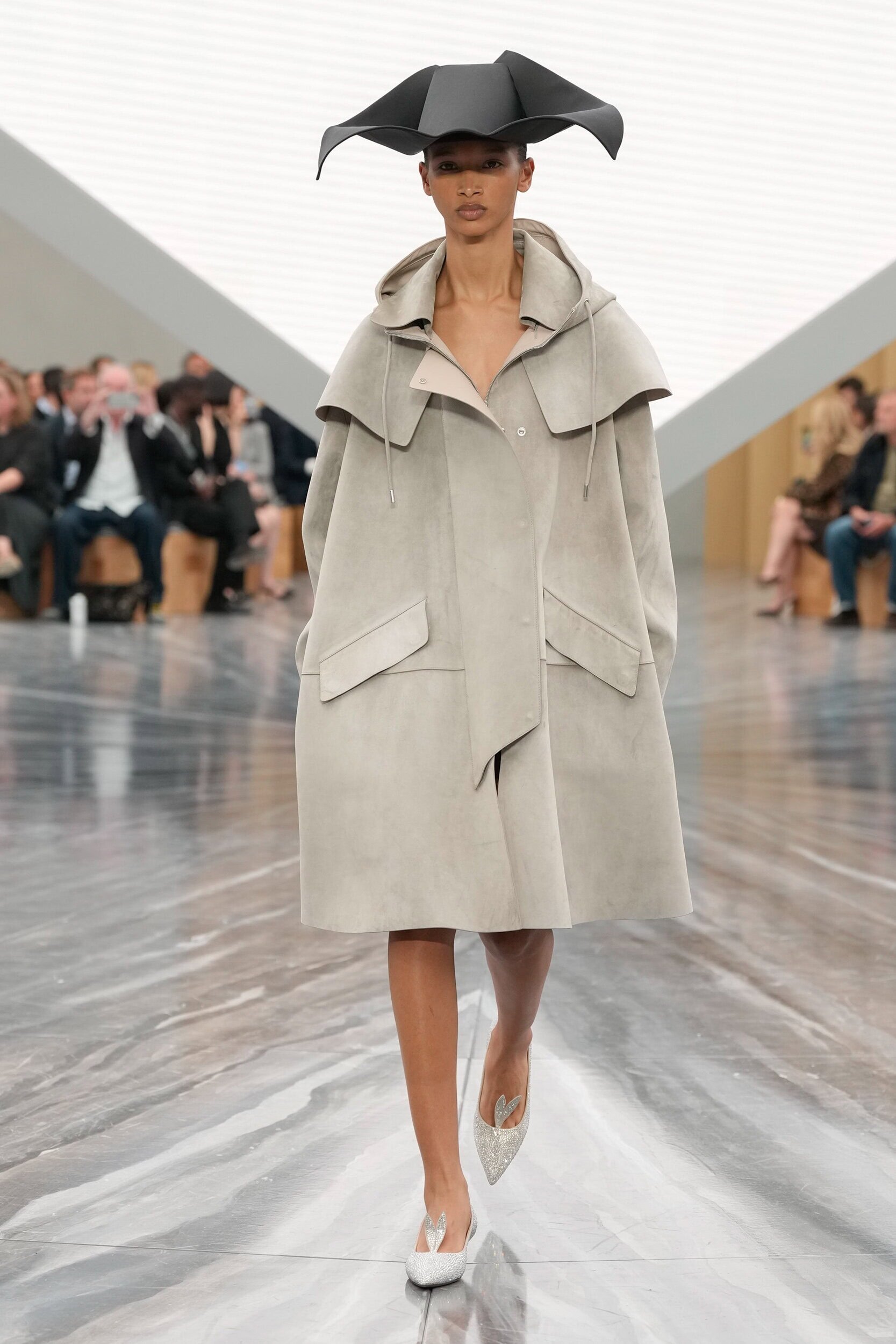
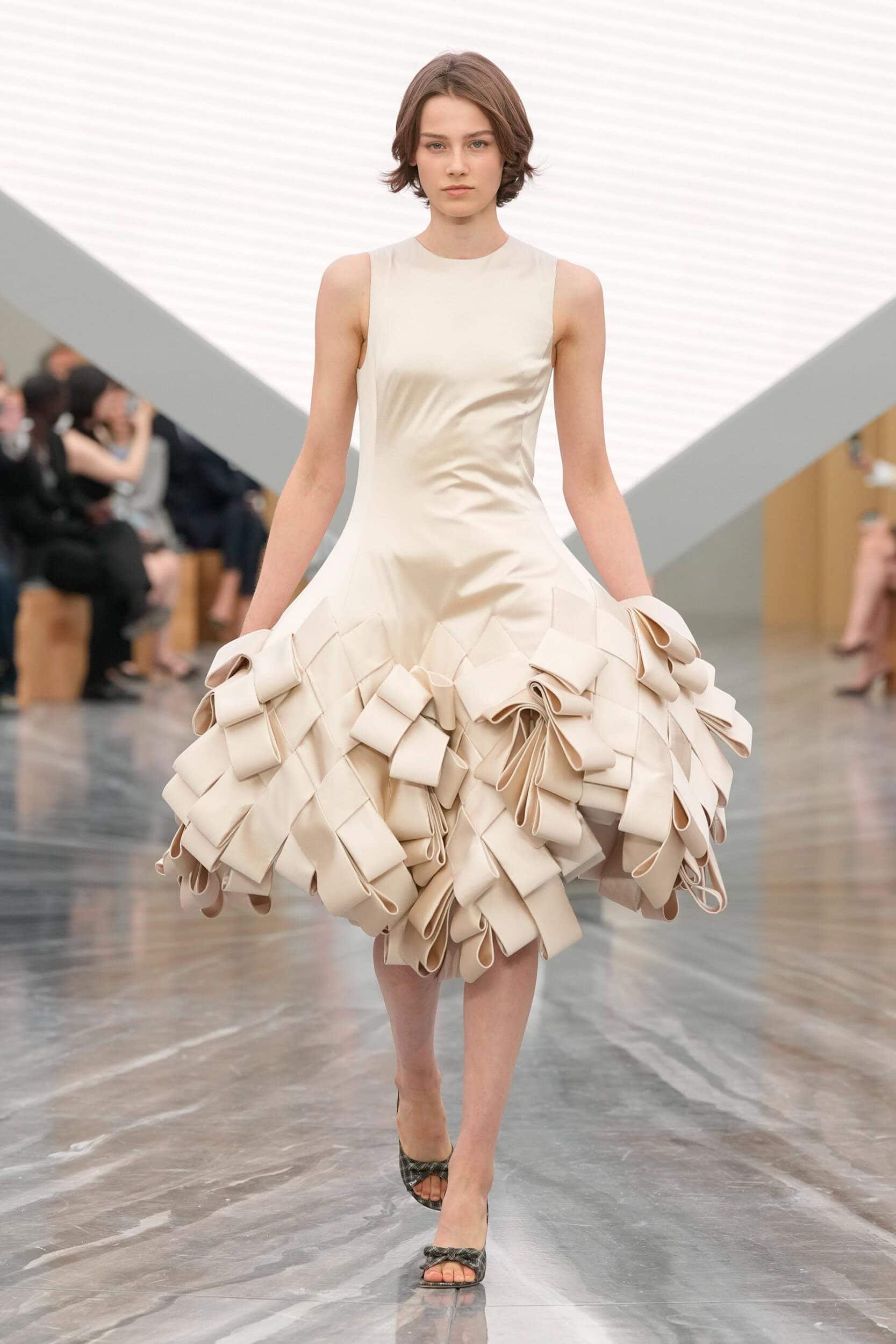
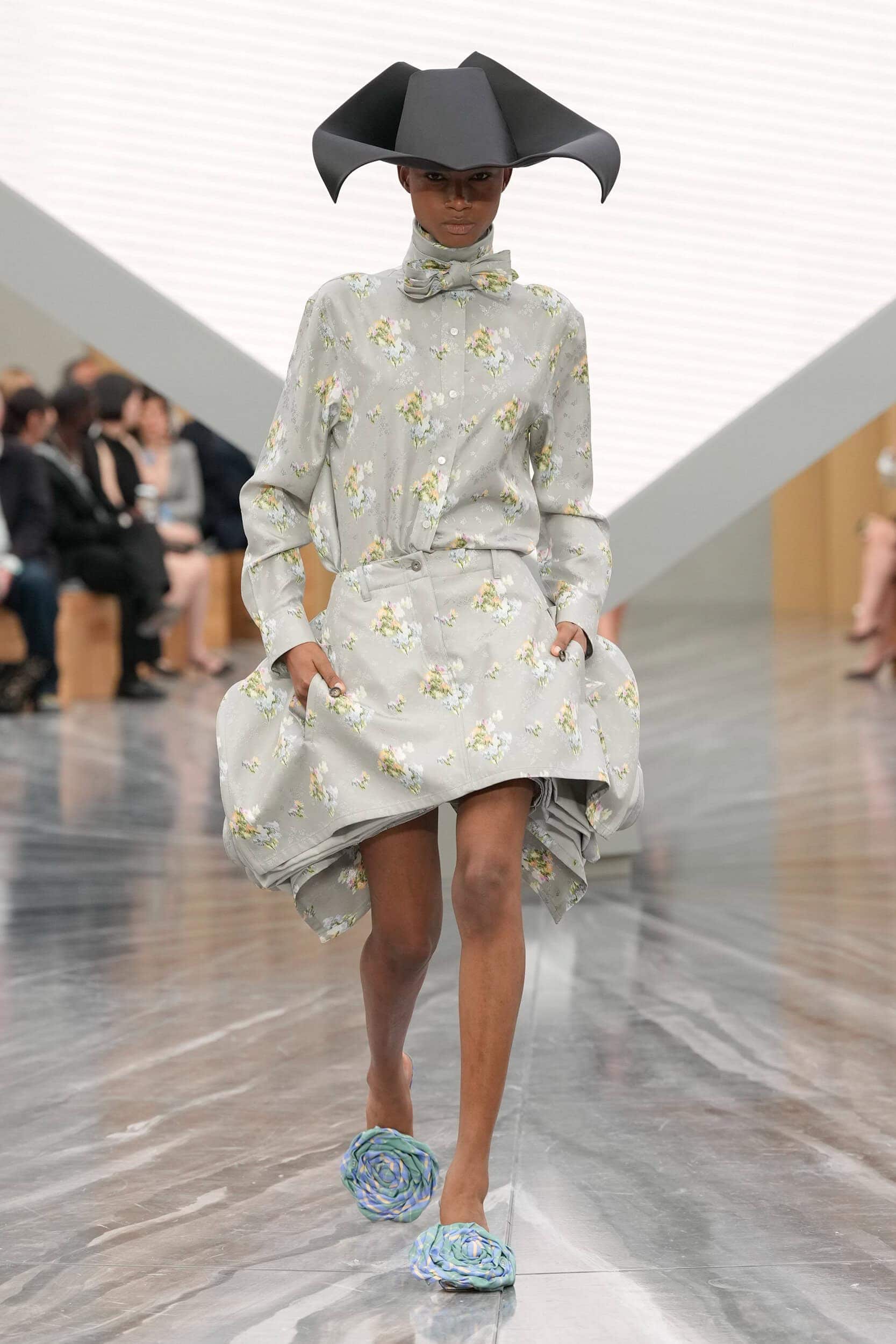
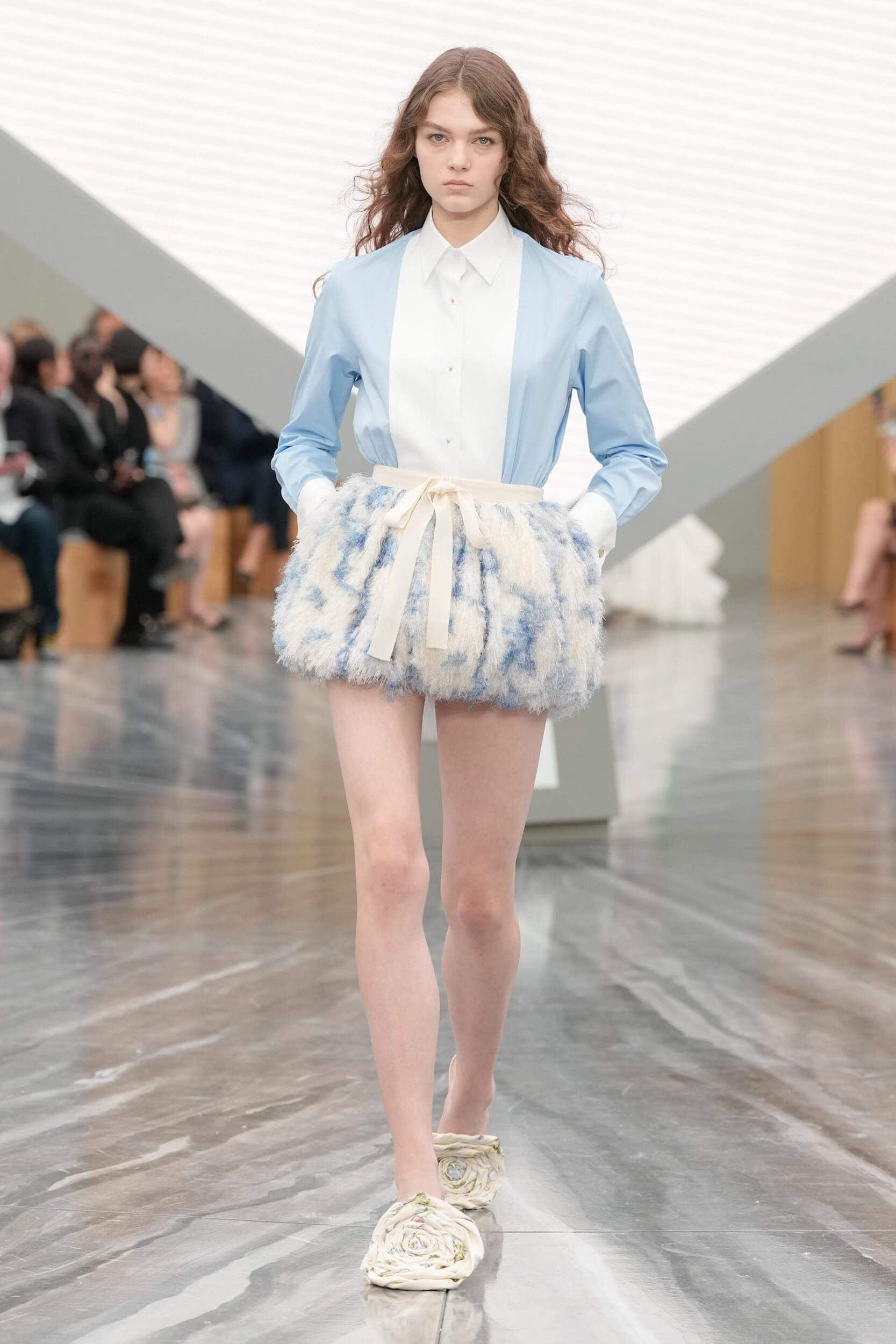
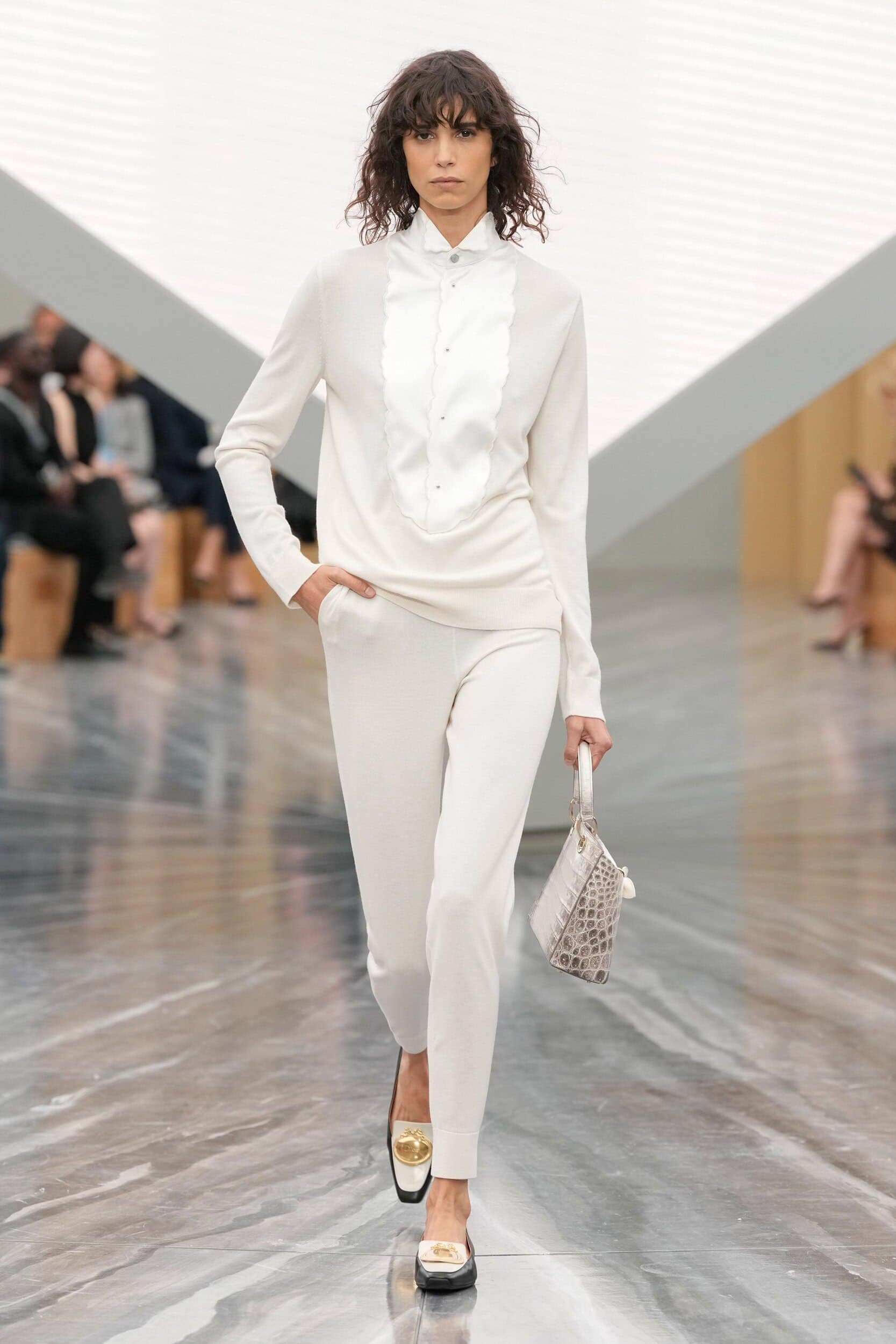
THE DIRECTION
On-brand factor has to be carefully considered in this instance, as it marks Jonathan Anderson’s womenswear debut for the house. The collection showed reverence for legacy and intelligent play with house codes, while oscillating between casual and artisanal registers. At times the narrative felt diffuse, yet one could argue the unifying thread was Anderson’s own design language – his instinct for inversion, distortion, and sculptural play. Societal commentary, so central to Dior’s history, was suggested but not fully crystallized. The result: a debut that honors Dior’s elasticity while positioning Anderson’s mind as the through-line.
THE WRAP UP
The debut bore Anderson’s hallmarks—architectural cuts, sculptural control, and a confident hand in shaping silhouette. His use of archival cues affirmed a respect for Dior’s codes, even as he attempted to stretch them into new registers. Yet the multiplicity of directions—shifts in mood, structure, and styling—made the through-line harder to trace. Where Chiuri often declared her narrative outright, Anderson’s felt more like an exploration: probing Dior’s elasticity, testing how far the house can expand without losing its gravitational pull.
If cohesion was elusive, promise was evident. This first collection suggested that Anderson may define his Dior less through a singular thesis than through an evolving dialogue—between past and present, spectacle and structure, heritage and the contemporary woman’s reality. The risk is ambiguity; the reward, if he sharpens the narrative in coming seasons, could be a Dior that speaks to our fragmented world with elegance and authority.
